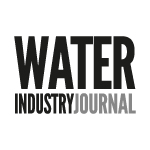Water-treatment operators around the world rely on a variety of pumps for the dosing of chemicals, with these systems ranging from heavy-duty equipment designed for industrial environments to ultra-high-precision dosing pumps injecting chemicals into processes in the finest increments.
Peristaltic
Peristaltic dosing pumps draw chemical through flexible tubing courtesy of rollers (usually two or three) which compress the hose and create a vacuum. As the rollers rotate, chemical is pushed towards the pump outlet in accordance with a pre-set flow rate.
These systems are known for their capacity to inject chemical in tiny increments at a range of flow rates, making them a versatile option for applications where accuracy and consistency are essential.
Peristaltic dosing pumps are simple to set up, easy to use and typically have a low maintenance requirement as they have fewer mechanical components compared to most other pump types and require only periodic tube replacement.
Solenoid
Solenoid-driven dosing pumps are microprocessor-based systems that activate an electromagnet in order to move a diaphragm and displace fluid into the discharge line.
These pumps are often chosen for their low energy consumption, continuous running capacity and precise stroke length and stroke rate adjustment. Meanwhile, minimal moving parts reduces maintenance and service requirement for a cost-effective solution to chemical dosing.
Solenoid-powered dosing pumps are a popular choice for water-industry processes as varied as potable, cooling and wastewater treatment where safety, precision and reliability are paramount.
Pneumatic
A type of positive displacement pump, an air-operated double-diaphragm (AODD) pump moves compressed air between its two chambers, forcing liquid into the discharge piping while the other chamber is simultaneously filled with liquid.
AODD pumps have no electrical parts, meaning they can be fully submerged without compromising performance.
Meanwhile, their capacity for handling highly viscous and abrasive liquids – including those containing suspended solids such as sludges and slurries – makes them ideal for even the most demanding water-treatment applications.
Motor driven
Motor-driven pumps, which commonly use pistons, plungers or diaphragms, can be found in heavy-duty applications where various combinations of pump head and motor power help meet dosing requirements.
When fitted with mechanically actuated diaphragms, motor-driven pumps are well suited to low-pressure applications and perform well in fluctuating conditions which reduces chemical and water consumption.
Motor-driven pumps are popular in the water-treatment sector for their wide performance range, robustness and reliability in challenging conditions.
Water driven
Venturi-powered dosing pumps use water pressure in order to draw chemical and are an excellent non-electric alternative for operators seeking high performance without the restrictions of other pump types.
Being free of electrical connection, water-driven pumps are not only a sustainable alternative, they can also be used on remote sites where mains power may not be available.
Their self-priming design means water-driven pumps offer low running and maintenance costs and, because they dose proportionally to water volume, chemical consumption is minimised for efficient operation.
These features make water-driven pumps a popular choice for operators seeking to improve sustainability and reduce costs in their water-treatment applications.
Global dosing pump manufacturer SEKO has recently introduced Hydrakos, a range of water-driven pumps that combine intelligent design with superior build quality to deliver precise, consistent chemical injection in applications across the water-treatment sector.
Offering a versatile alternative to peristaltic, solenoid, pneumatic and motor-driven dosing, SEKO’s systems install directly into the water supply line and mix chemical proportionally regardless of flow or pressure variations for accurate dosing and repeatable results.
These pumps are designed to automatically cease dosing in the event of water flow interruption, helping to prevent chemical wastage, while their portability makes them ideal for use in emergency skids.
For more information on the Hydrakos range, SEKO can be contacted at one of its regional offices around the world:
seko.com/global/site/contact.




